Russian Economic Reforms in the 20th Century: Projects, Implementation, Social and Demographic Consequences
This issue of the journal is devoted to analyzing the experience of economic reforms in Russia in the 20th and early 21st centuries. The aim was to study the Soviet and post-Soviet stages of economic reforms, as well as to trace the general and specific influence of the spatial factor on the design, implementation and results of reforms in agrarian and demographic spheres.
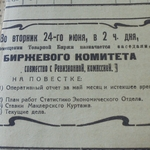 Reforms and Economic Development
Reforms and Economic Development
O.V. Il’inykh
Formation and Transformation of the Legal Status of Commodity Exchanges in 1921–1922 (On the Example of the Novonikolayevsk Commodity Exchange)
The article describes formation and transformation of the legal status of commodity exchanges in 1921–1922 on the example of the Novonikolayevsk Commodity Exchange. It was created in February 1922 as a state organization under the Siberian Regional Bureau VSNKh in order to establish regional trade relations. With the development of the NEP, the central authorities began to position commodity exchanges as public organizations with the function of monitoring the commercial activities of predominantly state-owned enterprises. The charter of the Exchange, adopted in December 1922, became a compromise between the authorities at different levels and the organization itself.
Publishing: 28/08/2023
How to cite: Il’inykh O.V. Formation and Transformation of the Legal Status of Commodity Exchanges in 1921–1922 (On the Example of the Novonikolayevsk Commodity Exchange) // Historical Courier, 2023, No. 4 (30), pp. 11–21.[Available online: http://istkurier.ru/data/2023/ISTKURIER-2023-4-01.pdf]
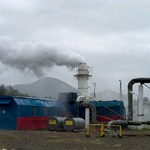 Reforms and Economic Development
Reforms and Economic Development
E.N. Chernolutskaia
Transition Difficulties: Development of Geothermal Energy in the Kuril Islands in the Context of Russian Market Reforms (1990–2000s)
In 2007–2008, the first two geothermal plants were built on the Kuril Islands. This was an important event for the island regions, which since the early 1990s had been facing an energy supply crisis due to a shortage of fuel for diesel power plants and coal-fired boiler houses. Geoenergy offered a chance to get out of this condition and opened up new development opportunities. However, the process of transition to a renewable energy source turned out to be long and difficult. The article reveals its nature, contradictions, the degree of achievement of objectives and social cost, and shows the role of management and business structures.
Publishing: 28/08/2023
How to cite: Chernolutskaia E.N. Transition Difficulties: Development of Geothermal Energy in the Kuril Islands in the Context of Russian Market Reforms (1990–2000s) // Historical Courier, 2023, No. 4 (30), pp. 22–35.[Available online: http://istkurier.ru/data/2023/ISTKURIER-2023-3-02.pdf]
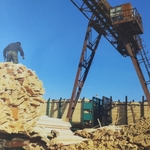 Reforms and Economic Development
Reforms and Economic Development
M.N. Baldano, A.T. Dasheeva, E.V. Dyatlova
Chinese Enterprises in the Timber Economics of Siberia: Business Practices and the Local Population
The article focuses on Chinese investment, management and workforce in such an important economic sector in Eastern Russia as timber processing. The case studies trace what economic practices and social interactions are taking shape during the formation and development of Chinese entrepreneurs' industrial forestry business and how host communities have reacted to the appearance of this element in their lives. The local story of «Chinese sawmills» (small timber processing enterprises with Chinese capital, management, machinery and workers) provides some insight into the mechanisms and results of interaction between cross-border migrants and host communities in villages, workers' settlements and small towns.
The article was made on the topic of the state assignment “Russia and Inner Asia: Dynamics of Geopolitical, Socioeconomic and Intercultural Interaction (17th–21st Centuries)” (№ 121031000243-5).
Publishing: 28/08/2023
How to cite: Baldano M.N., Dasheeva A.Ts., Dyatlova E.V. Chinese Enterprises in the Timber Economics of Siberia: Business Practices and the Local Population // Historical Courier, 2023, No. 4 (30), pp. 36–48.[Available online: http://istkurier.ru/data/2023/ISTKURIER-2023-4-03.pdf]
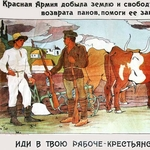 Agricultural Development
Agricultural Development
V.V. Kondrashin
The Peasantry as a Source of Human and Material Resources in the Civil War for the Soviet Government
The article highlights one of the most important aspects of the history of the Civil War in Russia – the participation of the peasantry in this war. The thesis is substantiated that it was the peasantry, the peasant economy that became the main source of human and material resources during the Civil War for the Soviet government. The peasants provided the Bolshevik regime, industrial centers and the Red Army with food, raw materials, performed various state duties, fought as mobilized and volunteers in the ranks of the Red Army on the fronts of the war. This allowed the Soviet state to defeat the political regimes that opposed them in the Civil War.
The article was prepared as part of the testing of chapter 12 of the volume “History of Russia” of the IRI RAS.
Publishing: 28/08/2023
How to cite: Kondrashin V.V. The Peasantry as a Source of Human and Material Resources in the Civil War for the Soviet Government // Historical Courier, 2023, No. 4 (30), pp. 49–68. [Available online: http://istkurier.ru/data/2023/ISTKURIER-2023-4-04.pdf]
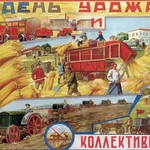 Agricultural Development
Agricultural Development
V.A. Il’inykh
The USSR Agriculture in 1930–1932: Dynamics, Factors of Development
The author carried out the analysis of the dynamics and main factors of the agricultural development in the USSR in 1930–1932. It was found out that mass collectivization caused a deep crisis in the animal husbandry. In crop production an increase in acreage was achieved. However, the qualitative indicators of the development of the industry deteriorated in the early 1930s. 1932 was a crisis not only for animal husbandry, but also for arable farming. At the same time, in 1932, the agrarian sector of the USSR was even more diversified than in the late 1920s.
The article was made on the topic of the state assignment “Dynamics of the Economic and Social Development of Asian Russia in the Context of Geostrategic Challenges of the Late 19th – Early 21st Centuries” (FWZM-2021-0003).
Publishing: 28/08/2023
How to cite: Il’inykh V.A. The USSR Agriculture in 1930–1932: Dynamics, Factors of Development // Historical Courier, 2023, No. 4 (30), pp. 69–79. [Available online: http://istkurier.ru/data/2023/ISTKURIER-2023-4-05.pdf]
 Agricultural Development
Agricultural Development
A.A. Plyasulya
Political Departments of State Farms in Western Siberia in 1933–1934
In the article the author examines the activities of the political departments of state farms in the West Siberian region in 1933–1934. Political departments combined political, administrative, punitive, economic and cultural-educational functions. The main focus of their work was to the purging of personnel on the farms. As a result of the shift in the activities of the political departments towards the solution of economic tasks and problems the chiefs of political departments functionally duplicated and substituted for the directors of state farms and also didn’t always intervened adequately in the work of the administration and specialists of the farms. It had a negative impact on state farm production.
Publishing: 28/08/2023
How to cite: Plyasulya А.А. Political Departments of State Farms in Western Siberia in 1933–1934 // Historical Courier, 2023, No. 4 (30), pp. 80–91. [Available online: http://istkurier.ru/data/2023/ISTKURIER-2023-4-06.pdf]
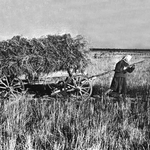 Agricultural Development
Agricultural Development
S.V. Sharapov
State, Collective Farms and Shadow Economy during the Great Patriotic War (Based on Materials from Novosibirsk Oblast)
The article describes the problems of functioning of the collective farm sector during the Great Patriotic War. Collective farms experienced the burden of the mobilization policy that minimized the opportunities for peasants to receive income from labor in the public economy. The substitution of personal economic interest by administrative coercion had a negative impact on production indicators. Collective farmers were often indifferent to the preservation of artisanal property. The peasantry's activity was transferred to the shadow sector of the economy. By emptying collective farm barns, the state provoked embezzlement.
The article was made on the topic of the state assignment “Dynamics of the Economic and Social Development of Asian Russia in the Context of Geostrategic Challenges of the Late 19th – Early 21st Centuries” (FWZM-2021-0003).
Publishing: 28/08/2023
How to cite: Sharapov S.V. State, Collective Farms and Shadow Economy during the Great Patriotic War (Based on Materials from Novosibirsk Oblast) // Historical Courier, 2023, No. 4 (30), pp. 92–105. [Available online: http://istkurier.ru/data/2023/ISTKURIER-2023-4-07.pdf]
 Agricultural Development
Agricultural Development
G. Orynbaeva
The Study of the Virgin Lands in Kazakhstan Historiography: Results and Problems
The article analyzes the current state of Kazakhstani historiography in the field of studying the topic of virgin lands. As the results of the virgin lands campaign historians name: resolution of food deficit, technogenic modernization, loss of demographic leadership by the titular ethnic group, intensive processes of acculturation, ecological crisis associated with soil erosion. The author's vision of further development of this topic in Kazakhstan is formulated, including the need to study such aspects as: virgin everyday life, the activities of a group of scientists led by A. Baraev, the role of labor heroes, the processes of transformation in the Kazakh folk culture.
Publishing: 28/08/2023
How to cite: Orynbaeva G.U. The Study of the Virgin Lands in Kazakhstan Historiography: Results and Problems // Historical Courier, 2023, No. 4 (30), pp. 106–115. [Available online: http://istkurier.ru/data/2023/ISTKURIER-2023-4-08.pdf]
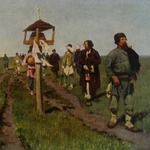 Migrations
Migrations
S.V. Vinogradov, Y.G. Yeshchenko
State Policy to Create a New Migration Model in the Russian Empire in the Second Half of the 19th – Early 20th Centuries
Based on the analysis of the legal documentation of the post-reform period, the article shows the activities of the government to implement state regulation of internal migration. The main components of the migration model created in the Russian Empire in the second half of the 19th – early 20th centuries, which included a set of measures to plan the directions of migration flows, organize the movement of labor resources and create conditions for securing migrants in new places, are considered.
This work has been supported by the grants the Russian Science Foundation No. 23-28-00547 “Model of Regulation of Labor Mmigration in the Russian Empire in 1861–1914 (By the Example of the Formation of Industrial and Commercial Clusters of the Volga-Caspian Fishing Region)”: https://rscf.ru/en/project/23-28-00547/.
Publishing: 28/08/2023
How to cite: Vinogradov S.V., Yeshchenko Yu.G. State Policy to Create a New Migration Model in the Russian Empire in the Second Half of the 19th – Early 20th Centuries // Historical Courier, 2023, No. 4 (30), pp. 116–132. [Available online: http://istkurier.ru/data/2023/ISTKURIER-2023-4-09.pdf]
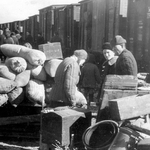 Migrations
Migrations
E.V. Baranova, D.V. Mankevich, V.N. Maslov, A.V. Stalmakova
Historiography of Postwar Settlement in the Kaliningrad Region in the Context of Soviet National Migrations
The article reveals the main stages and directions of research in the field of migration of the Soviet population in the postwar period in the country in general and in the Kaliningrad region in particular. The works on the problems of organizing resettlement and adaptation of migrants in a new place are analyzed. The authors came to the conclusion about the prevalence of an interdisciplinary approach in the study of migration processes in the USSR. At the same time, not enough works using information technologies are published; they have started to appear only in recent years.
The article was carried out within the framework of the project “Migration as a Factor in the Social Transformation of the Regions of the USSR during the Post-War Recovery: Analysis by Digital Humanities” (Scientific and Educational Laboratory of interdisciplinary empirical research of the Higher School of Economics – Perm and the Research Center for Social and Humanitarian Informatics of the Baltic Federal University named after Immanuel Kant).
Publishing: 28/08/2023
How to cite: Baranova Е.V., Mankevich D.V., Maslov В.N., Stalmakova A.V. Historiography of Postwar Settlement in the Kaliningrad Region in the Context of Soviet National Migrations // Historical Courier, 2023, No. 4 (30), pp. 133–151. [Available online: http://istkurier.ru/data/2023/ISTKURIER-2023-4-10.pdf]
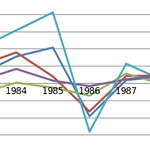 Migrations
Migrations
R.V. Pavlyukevich, N.V. Gonina
The Influence of the Crisis of the Soviet System on the Migration Exchange between the City of Krasnoyarsk and the Asian Republics of the USSR in 1980–1989
The previously formed migration exchange routes that operated between Krasnoyarsk and the Asian republics continued to function in the 1980s. Migrants from Asia were able to adapt to changes in the economy of Krasnoyarsk, as their number increased, despite the decline in construction and production activities. At the same time, the situation has not changed significantly for Krasnoyarsk. The positive mechanical growth, which was dominated by rural residents, and the continued active departure of citizens, including qualified specialists, contributed to the numerical growth of the population, but reduced its potential.
Publishing: 28/08/2023
How to cite: Pavlyukevich R.V., Gonina N.V. The Influence of the Crisis of the Soviet System on the Migration Exchange between the City of Krasnoyarsk and the Asian Republics of the USSR in 1980–1989 // Historical Courier, 2023, No. 4 (30), pp. 152–166. [Available online: http://istkurier.ru/data/2023/ISTKURIER-2023-4-11.pdf]
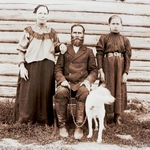 Demography
Demography
V.A. Zverev
Demography of the Tobolsk Province in the Late Imperial Period: The First Step from Tradition to Modernity
The quantitative parameters of the process of renewal of generations in the population of Tobolsk Province in the period 1884–1914 are revealed and interpreted in the light of the theory of demographic transition. We have found evidence of a reduction in marriage rates over time, an intensification of natural population growth due to a slight increase in the birth rate, but mainly as a result of a reduction in mortality. It is concluded that to the east of the Urals, as in European Russia, there are early signs of the beginning of the transition from the traditional type of population reproduction to modern orders.
Publishing: 28/08/2023
How to cite: Zverev V.А. Demography of the Tobolsk Province in the Late Imperial Period: The First Step from Tradition to Modernity // Historical Courier, 2023, No. 4 (30), pp. 167–180. [Available online: http://istkurier.ru/data/2023/ISTKURIER-2023-4-12.pdf]
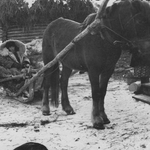 Demography
Demography
A.A. Burmatov
Socio-Demographic Situation in Western Siberia during the Years of the New Economic Policy (1921–1929)
The socio-demographic situation in Western Siberia in the years of the NEP is considered in the article. The demographic situation in 1920–1929 is characterized. The factors determining the changes in the socio-demographic situation are revealed. The dynamics of birth rate, mortality, including infant mortality, are analyzed. The factors influencing population reproduction and its dynamics are considered. It is concluded that the population of Siberia at the end of the 1920s entered the period of demographic transition, which became evident for large cities and for most cities – administrative centers of districts. The population was familiar with the methods of birth control and applied them in practice.
The article was made on the topic of the state assignment “Dynamics of the Economic and Social Development of Asian Russia in the Context of Geostrategic Challenges of the Late 19th – Early 21st Centuries” (FWZM-2021-0003).
Publishing: 28/08/2023
How to cite: Burmatov А.А. Socio-Demographic Situation in Western Siberia during the Years of the New Economic Policy (1921–1929) // Historical Courier, 2023, No. 4 (30), pp. 181–191. [Available online: http://istkurier.ru/data/2023/ISTKURIER-2023-4-13.pdf]
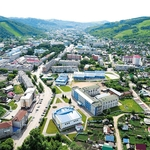 Demography
Demography
E.E. Tinikova
Demographic Development of Gorno-Altaisk in 1928–2020
The main directions of the demographic development of Gorno-Altaisk in the conditions of delayed urbanization of the region are analyzed on the basis of official statistics. The great role of the industrial development of the region and the economic specialization of the city during the 20th – early 21st centuries on the demographic dynamics of the population is noted. The problem of sources of population dynamics formation is investigated. The role of migration as the main component of the population dynamics of Gorno-Altaisk is proved by the analysis of archival materials, population census data and information presented on the official website of the Federal State Statistics Service.
Publishing: 28/08/2023
How to cite: Tinikova E.E. Demographic Development of Gorno-Altaisk in 1928–2020 // Historical Courier, 2023, No. 4 (30), pp. 192–202. [Available online: http://istkurier.ru/data/2023/ISTKURIER-2023-4-14.pdf]
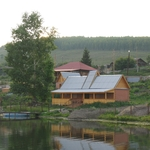 Demography
Demography
L.N. Slavina
How the Population of the Siberian Village has Changed. The Demographic Consequences of Its Radical Transformation
Using the example of rural residents of the Krasnoyarsk Territory, the article examines the nature and degree of influence of the radical transformation of the Siberian village in the post-Soviet period on the reproduction of its population. It is concluded that the changes in demographic processes were profound, but not radical. The trends formed in the Soviet years continued to develop. The regional processes took place in the context of the all-Russian ones, but faster, they had common characteristics and, at the same time, differed in parameters. The demographic quality of Krasnoyarsk residents has deteriorated over 30 years and now does not deserve high praise.
Publishing: 28/08/2023
How to cite: Slavina L.N. How the Population of the Siberian Village has Changed. The Demographic Consequences of Its Radical Transformation // Historical Courier, 2023, No. 4 (30), pp. 203–217. [Available online: http://istkurier.ru/data/2023/ISTKURIER-2023-4-15.pdf]
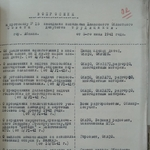 Open Archives
Open Archives
V.A. Kyshpanakov
Khakass Autonomous Region on the Eve and in the First Months of the Great Patriotic War in the Minutes and Decisions of the Executive Committee of the Regional Council of Working Deputies
The situation in the Khakass Autonomous Oblast on the eve and in the first months of the Great Patriotic War is shown on the basis of the minutes of the meetings of the Executive Committee of Regional Council of Workers' Deputies. The minutes of the regional council reflect ordinariness of the everyday tasks of the executive power of a small national region. Despite the fact that the war was already raging in Europe, life in the country's hinterland went on as usual. The documents of the first months of the war show the sluggishness of the bureaucratic machine in dealing with urgent war issues and their extremely poor execution.
Publishing: 28/08/2023
How to cite: Kyshpanakovv V.A. Khakass Autonomous Region on the Eve and in the First Months of the Great Patriotic War in the Minutes and Decisions of the Executive Committee of the Regional Council of Working Deputies // Historical Courier, 2023, No. 4 (30), pp. 218–226. [Available online: http://istkurier.ru/data/2023/ISTKURIER-2023-4-16.pdf]
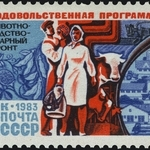 Open Archives
Open Archives
D.S. Orlov
Implementation of the Kuzbass Food Program in the Second Half of the 1980s (Analytical Note of the Regional Department of Statistics of the Kemerovo Region)
An analytical note of the regional department of statistics “On the implementation of the Food Program of the Kemerovo Region” is introduced into scientific circulation. Its content is important for understanding the specifics of the development of agriculture in the region in the second half of the 1980s. Measures to support the agricultural sector, taken as part of the implementation of the Kuzbass Food Program, led to an improvement in the situation during the eleventh five-year plan. However, the program for most of the established indicators was not implemented. A significant amount of agricultural products was imported to Kuzbass from other regions.
Publishing: 28/08/2023
How to cite: Orlov D.S. Implementation of the Kuzbass Food Program in the Second Half of the 1980s (Analytical Note of the Regional Department of Statistics of the Kemerovo Region) // Historical Courier, 2023, No. 4 (30), pp. 227–239. [Available online: http://istkurier.ru/data/2023/ISTKURIER-2023-4-17.pdf]
 Miscellanea
Miscellanea
A.V. Korenevskiy
Russian Empire after the World War: An Unfulfilled Forecast?
During the First World War, the confrontation unfolded also in the sphere of political analysis, where the British “think tank” Wellington House prevailed. Within its walls was prepared one of the projects of post-war organization – the book by A.J. Toynbee “Nationality and War”, in which a significant place is given to the future of Russia. Toynbee believed that the chance of preserving the empire is its transformation into a kind of hybrid of federation and confederation. These unrealized recommendations show some similarities with the idea that formed the basis of the USSR.
Publishing: 28/08/2023
How to cite: Korenevskiy А.V. Russian Empire after the World War: An Unfulfilled Forecast? // Historical Courier, 2023, No. 4 (30), pp. 240–258. [Available online: http://istkurier.ru/data/2023/ISTKURIER-2023-4-18.pdf]
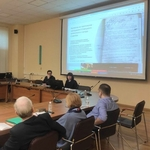 Scientific Life
Scientific Life
A.A. Popov
Commodity – Money – Commodity: International Conference on Trade Relations in the Soviet Union
On March 24–25, 2023, the Institute for Advanced Soviet and Post-Soviet Studies (HSE University) hosted the international scientific conference „Commodity – Money – Commodity? Patterns and paradoxes of trade in the USSR and beyond”. The conference brought together researchers of various aspects of the history of trade relations in the USSR and the socialist states. The event was aimed at a comprehensive understanding of the phenomenon of trade under socialism, as a complex and dynamic phenomenon, covering many areas of the life of the state, enterprises and ordinary people. Eight thematic topics worked at the conference, at which reports were presented on the entire period of Soviet history.
Publishing: 28/08/2023
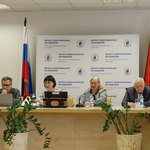 Scientific Life
Scientific Life
N.V. Gonina
All-Russian Interdisciplinary Conference “Historical Demography and Historical Geography: Issues of Fundamental and Relevant Research”
First All-Russian Scientific and Practical Conference “Historical Demography and Historical Geography: Issues of Fundamental and Topical Research” was held on May 26–27, 2023 in Moscow at the Institute of Demographic Research (IDR) of the Federal Research Center of the Russian Academy of Sciences. The purpose of the conference was to establish a dialogue in the modern multidisciplinary scientific space to solve topical demographic problems. The meetings were attended by scientists from Moscow, St. Petersburg, Kazan, Kaliningrad, Astrakhan, Novosibirsk, Krasnoyarsk, Irkutsk, and Vladivostok. The work took place in two sections devoted to the problems of population studies (1) and settlement (2) in the 19th–20th centuries.
Publishing: 28/08/2023



